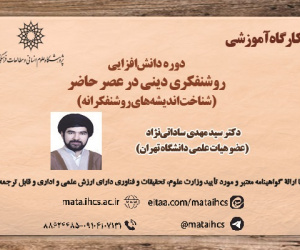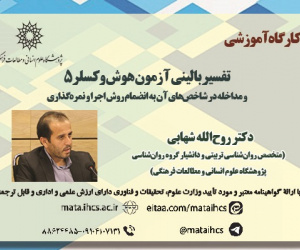حوزه های مبدأ در استعاره های مفهومی ایمان و کفر در قرآن کریم (مقاله علمی وزارت علوم)
درجه علمی: نشریه علمی (وزارت علوم)
آرشیو
چکیده
بر مبنای یافته های اخیر علوم شناختی، ذهن انسان با بهره گیری از تجربه های حسی روزمره به بازنمایی مفاهیم انتزاعی بر پایه مفاهیم عینی می پردازد. از دیدگاه زبان شناسی شناختی، استعاره یک فرآیند ذهنی-زبانی است. در قرآن کریم نیز شواهد فراوانی از این نحوه مفهوم سازی مشاهده می شود. نظر به بسامد واژگان ایمان و کفر در قرآن و روایات متعددی که از معصومان(علیه السلام) درباره ایمان و کفر نقل شده است، نشان می دهد که ایمان و کفر از همان اوایل اسلام دغدغه مسلمانان بوده تا بدانجا که این مفاهیم را به یکی از مهم ترین مؤلفه های اعتقادی مبدّل کرده است. دوگانگی ایمان و کفر از زوایای با اهمیت در مفهوم سازی های استعاری قرآن است. این استعاره ها در بستر گسترده ای از انگاره های فرهنگی شکل گرفته اند و متأثر از تجربه های رایج دوران نزول قرآن هستند. پژوهش حاضر در صدد است به این سؤال پاسخ دهد که حوزه های مبدأ در مفهوم سازی ایمان و کفر در قرآن کدامند؟ به منظور گردآوری داده ها، از فرایند تشخیص استعاره که توسط گروه پراگِل جاز مطرح گردیده، استفاده شده است. مفاهیمی نظیر «نور و تاریکی»، «پاکی و آلودگی»، «تجارت»، «رنگ ها»، «عناصر طبیعت»، «مرگ و زندگی»، «برده و آزاده» و «اعضای بدن» از جمله حوزه های مبدأی هستند که قرآن برای مفهوم سازی ایمان و کفر از آن ها بهره گرفته است. این بررسی، درجه بالایی از نظام مندی در استعاره های زبانی ایمان و کفر را نشان می دهد. نه تنها می توان انگیزه بسیاری از عبارات قرآن را با مفهوم سازی استعاری توضیح داد، بلکه این استعاره ها به خوبی در ساختار کل نگر، یک مدل شناختی یا فرهنگی با دوگانگی ایمان و کفر را ارائه می دهند. به نظر می رسد تجربه بی واسطه و آشنایی کامل انسان با حوزه های «اعضای بدن» و «سلامتی و بیماری» سبب شده تا این حوزه ها بسامد بیشتری در مفهوم سازی ایمان و کفر داشته باشند.The Source Domains in Conceptual Metaphors of Faith and Disbelief in Holy Qur'an
Based on the recent findings of cognitive sciences, the human mind uses everyday sensory experiences to represent abstract concepts based on objective concepts. According to cognitive linguistics, metaphor is a mental-linguistic process. There are many evidences of this way of conceptualization in the Holy Qur'an. Considering the frequency of the words faith and disbelief in the Qur'an and the numerous traditions that have been narrated from Ahl al-Bayt (as) about faith and disbelief, it shows that faith and disbelief have been the concern of Muslims since the very beginning of Islam, so that these concepts are one of the most important believing components. The duality of faith and disbelief is an important angle in the metaphorical conceptualizations of the Qur'an. These metaphors have been formed in a broad context of cultural ideas and have been influenced by the common experiences of the time when the Qur'an was revealed. This research aims to answer the question, "What are the starting areas in the conceptualization of faith and disbelief in the Qur'an?" In order to collect data, the metaphor detection process proposed by the Pragglejaz Group has been used. Concepts such as "light and darkness", "purity and pollution", "business", "colors", "elements of nature", "death and life", "slave and free" and "body parts" are among the source domains that the Qur'an uses to conceptualize faith and disbelief. This study shows a high degree of systematicity in the linguistic metaphors of faith and disbelief. Therefore, not only one can explain the motivation of many expressions of the Qur'an by metaphorical conceptualization, but also these metaphors provide a cognitive or cultural model with the duality of faith and disbelief. It seems that the direct experience and complete familiarity of human beings with the areas of "body parts" and "health and disease" have caused these areas to have more frequency in the conceptualization of faith and disbelief.







